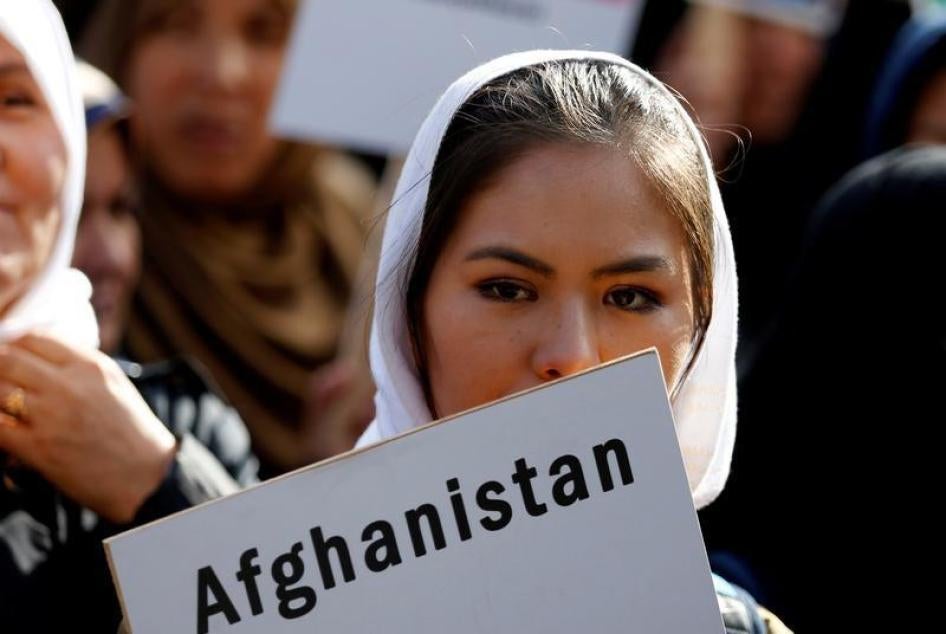Fifteen years ago, then-U.S. first lady Laura Bush guest-hosted the president’s weekly radio address to talk about Afghanistan. “Because of our recent military gains in much of Afghanistan, women are no longer imprisoned in their homes,” she told Americans, still reeling from the 9/11 attacks. “The fight against terrorism is also a fight for the rights and dignity of women.”
But how are Afghan women doing today, 15 years into a war that has cost billions of dollars, and tens of thousands of deaths of civilians and soldiers? A few recent stories help answer this question.
First the good news. Reuters recently reported on 20 women who are part of team of 80 engineers working to rebuild Kabul’s Darulaman Palace. This was no special program to empower women — a government official said the women were chosen simply because they were among the best applicants. Darulaman Palace, a grand ruin on a hill overlooking Kabul, is deeply symbolic. Built by a reformist king in the 1920s, it burned twice, and was reconstructed twice, before being destroyed a third time in 1990, as fighting engulfed the city.
That female Afghan engineers are helping rebuild it says something deeply encouraging about both Afghan women and Afghan men. Only 15 years after the fall of the Taliban regime allowed women to regain access to education, at least a few Afghan women are excelling in fields like engineering, where women are grossly underrepresented around the world. Afghan men, who make up the vast majority of government officials in a country where gender inequality remains deeply engrained in society, are having the good sense to hire them.
Now, the horrifying news. On December 17, five women who work as guards at Kandahar airport in southern Afghanistan were gunned down on their way to work, along with their male driver. A member of the Kandahar provincial council, Niamatullah Wafa, seemingly dismissed the murders in a Facebook post, writing, “Women should stay in their homes with hijab and dignity, a valued [position] that God has given them.” The killings happened a day after a girls’ school was burned down in Logar province, one of many attacks on schools, especially girls’ schools. The day before that, December 15, the local media reported that a man who rejected a bride he accused of not being a “virgin” kidnapped her underage sister in her place. In late December, Nilofar Rahmani, the country’s first female fixed-wing pilot, sought asylum in the U.S. rather than return to Afghanistan at the end of a 15-month training course. A lawyer representing her said that she and her family had faced “vicious threats” in Afghanistan, and she feared for her safety were she to return.
On December 18 the Ministry of Education announced that its previous figures for the number of children in school were incorrect. Not slightly incorrect — wildly incorrect. Rather than there being nearly 11 million children in school, as the government had previously reported, the ministry said the real figure is 6 million.
UNICEF previously estimated that 40 percent of Afghan children, or 4.2 million, the majority of them girls, were out of school. But with these new, lower figures from the Ministry of Education, it seems likely that these estimates were optimistic.
Here are the lessons we should take from these stories:
1) Millions of children, most of them girls, are still getting no education in Afghanistan.
2) Violence against women, including violence targeted at women and girls exercising their rights to education and employment, remains widespread in Afghanistan, often goes unpunished, and while often blamed on the Taliban, is seen as acceptable by many within the broader society, including within the government, and
3) Afghan women are fighting the odds and demanding equality, no matter how difficult and dangerous it is to do so.
Today, the United States, Afghanistan’s primary source of development and military aid, awaits its new president, Donald Trump, after a presidential contest in which the word Afghanistan was barely spoken.
Afghans, including Afghan women, are understandably nervous about what the Trump presidency will mean for their future. The new U.S. administration should commit to continuing the current level of assistance to Afghan women in the coming years, with a focus on learning from what has and has not worked in past years, and giving priority to the most essential services, education and health care.
Afghan women and girls have made extraordinary strides, but the project of building gender equality in Afghanistan has a hard, rough road ahead. Afghan women will continue to fight for their rights and dignity. Will the U.S. and international community stand by their side?









